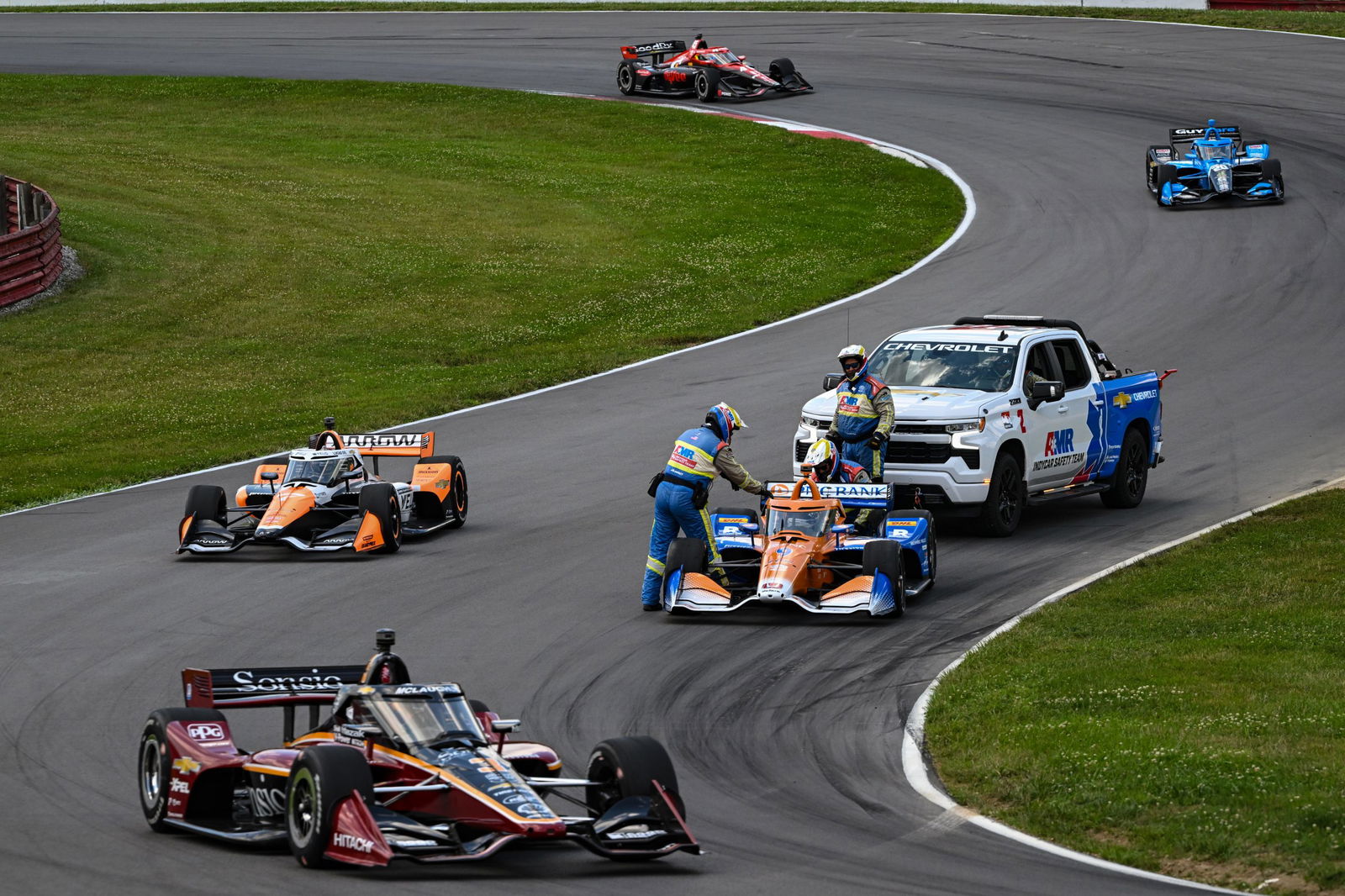

IndyCar’s long-awaited electrification finally rolled out at Mid-Ohio.
There were a few nerves around the mid-season debut, which were realised when Scott Dixon’s hybrid system failed on the formation lap.
It was an otherwise trouble-free and popular debut with McLaughlin and race runner-up Alex Palou voicing their approval of the hybrid system.
“Well, in my opinion it was great, much better, much more fun than I anticipated,” said Chip Ganassi Racing’s Palou.
“I thought that it was going to be pretty boring, that it was not going to give us much of a tool to make differences in between the drivers or the teams or even during the race, like to adjust your car balance and to do stuff.

“It’s been a lot better than I expected. It’s super fun. Every lap you can do something different to try and fix your car. I would say that it made even more of a difference during the race than qualifying. I’m 100 percent up for it.”
The hybrid system offers drivers an additional 120hp (90kW) when combined with traditional push-to-pass, taking the maximum power output up to 900hp (670kW).
The use of push-to-pass and deployment of hybrid energy is still manual and in the hands of the driver.
The hybrid system can harvest energy automatically under braking or by the driver manually.
Speaking post-race, McLaughlin echoed Palou’s sentiment that the hybrid system was a positive thing for IndyCar.
Notably, the Team Penske driver said he enjoyed having control over the deployment of recovered energy.
“It’s a lot more fun because it’s in our hands, and that’s what I think is really cool about it. There’s no order to deploy, nothing like that. Literally we push a button for it to work,” said McLaughlin.
“You’ve got to think about it so much. It changes whether you’re battling with someone or you’re by yourself just trying to get lap time. That’s what’s really cool. Then you’ve got push-to-pass on top of that.
“It’s busy, but I think that’s where you’re going to see the difference, and there’s going to be some mistakes creep in, especially on street circuits I’m sure. There’s a lot going on, but it’s fun.”

The IndyCar Series moves to Iowa Speedway for a double-header on July 14-15.
It’s expected the impact of the hybrid system will be less prominent at the bullring oval, although not insignificant.
“It’s going to differ to some ovals,” said McLaughlin.
“There’s going to be parts where you can use it, and in Milwaukee and Gateway where there’s probably more decel, you’ll use it differently than Iowa where it’s really quick now and you really have to be off the gas.
“Ultimately when we were testing there (at Iowa), we were really focused on car balance and then sort of got into the hybrid in the afternoon. It’s boost. It’s going to help us at some point. You’ve just got to use it at the right moments.”






















Discussion about this post